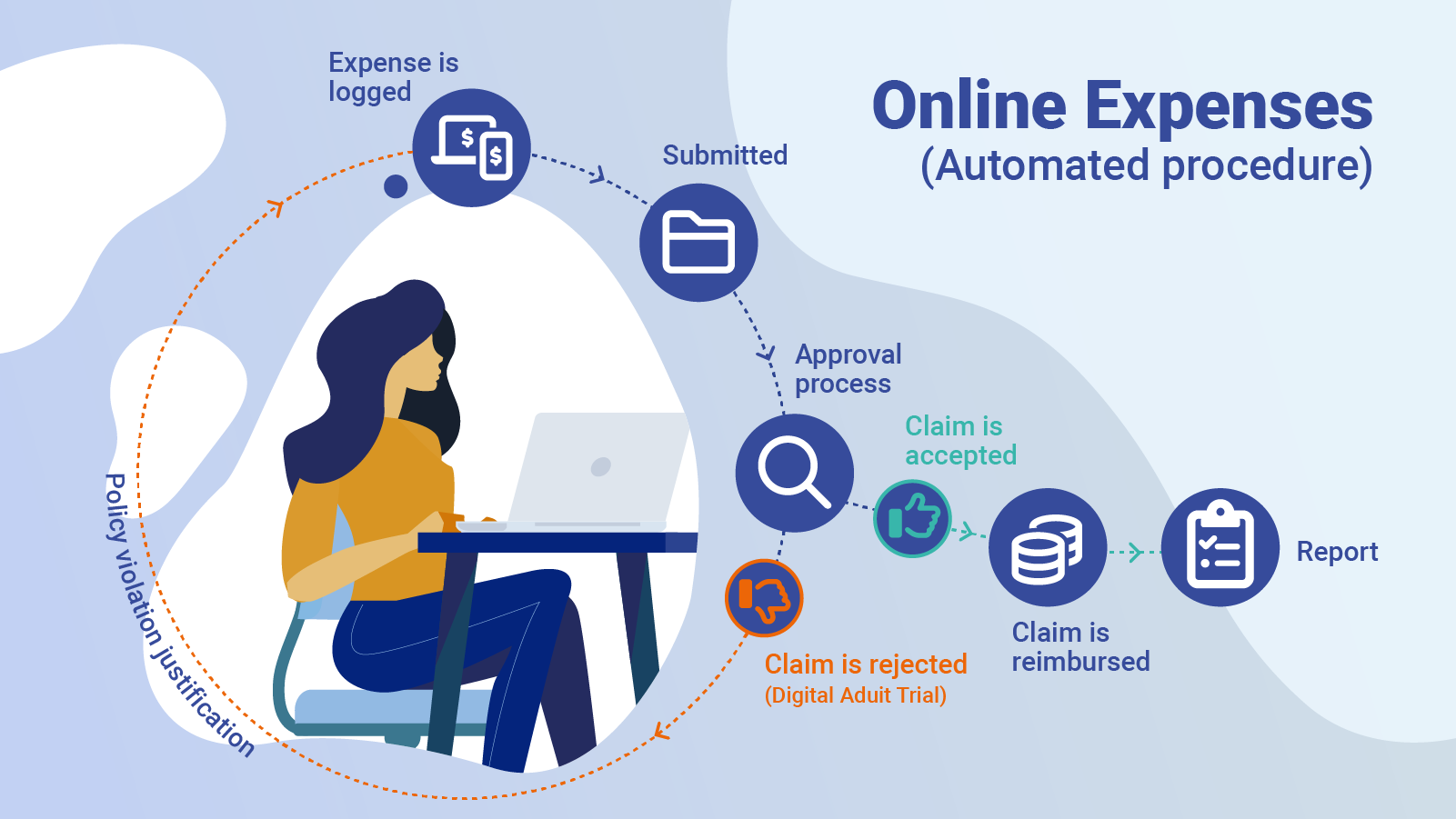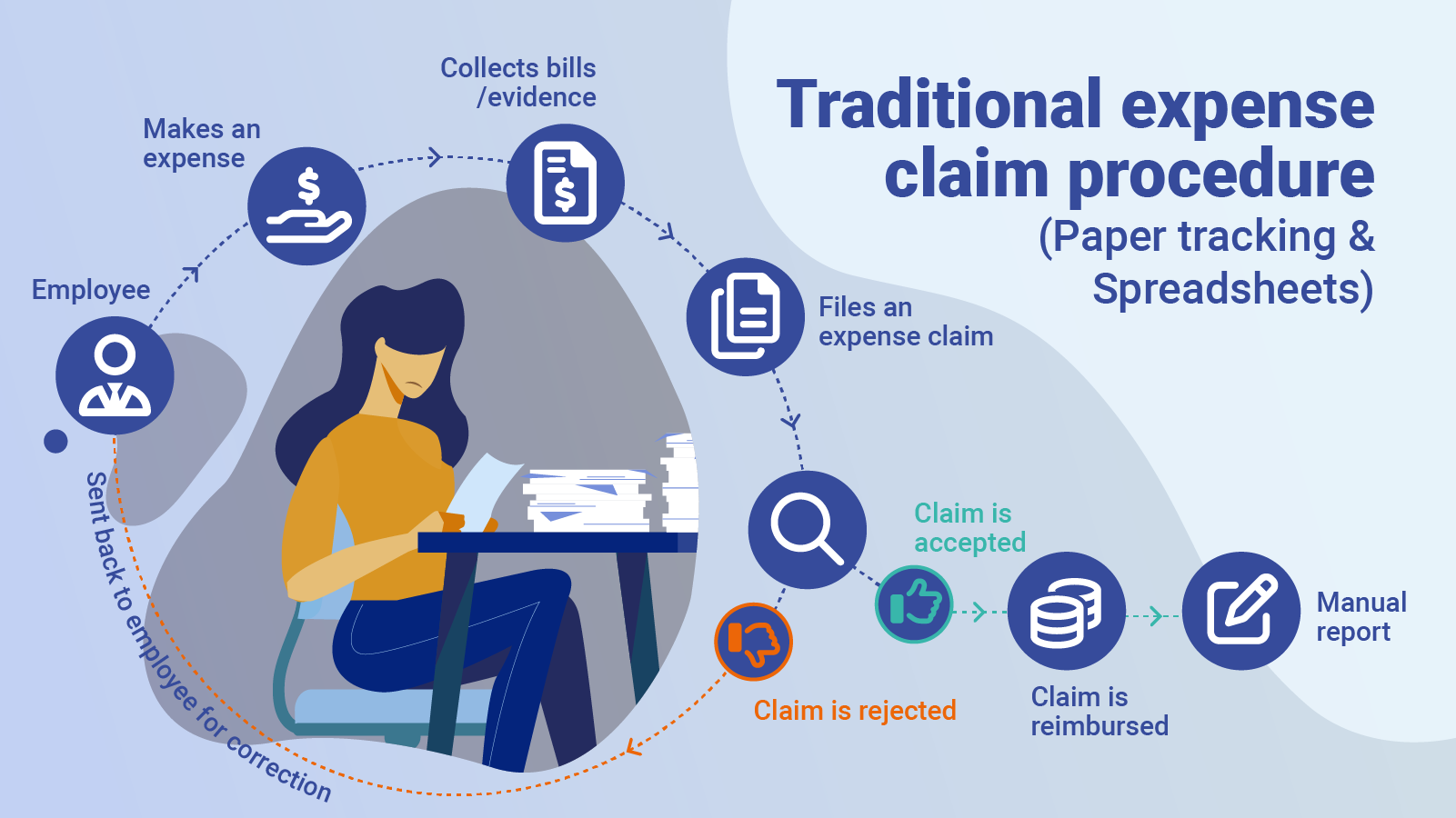Expense Management
Paper Tracking & Spreadsheets vs Expense Management Software
Managing business expenses is a key concern for all companies, businesses employ expense management software to process, pay, and audit employee-initiated expenses, something that is becoming difficult to coordinate with manual processes, paper receipts, and handwritten notes.
What is an expense management software?
Expense management refers to the systems deployed by a business to process, pay, and audit employee-initiated expenses. These costs include but are not limited to, expenses incurred for travel and entertainment. A successful expense management solution is one that intelligently utilises automation to provide your business with the means to process, pay, and audit expenses incurred by your employees. Expense management software reduces the need for paper, lowers the amount of time spent handling expenses and minimises errors.
Paper tracking & Spreadsheets vs Expense management software
Companies have different ways of managing expenses, including:
- Paper tracking – This is the traditional—and outdated—way to manage expenses, with employees collecting paper receipts and submitting them to the accounting department for approval on a monthly or quarterly basis.
- Spreadsheets – This is a popular choice among companies trying to reduce their reliance on paper that have yet to move over to a dedicated, automated expense management system.
- Expense management software – This approach simplifies the expense management process. The software alerts managers to expense reports needing review, letting them accept or reject the claim. Approved expenses are then automatically routed to accounting for reimbursement.


Expense management is a multi-step process that includes capturing and submitting expenses, which can involve: submitting reimbursement claims, approving or denying those claims, scheduling the claims for payment, and, finally, reimbursing the employee.
With the right process in place, companies can monitor their spending, ensure employees aren’t abusing the system, and take quick corrective action if they are.
It can be difficult to find these issues with manual systems, particularly for a company with a growing team of field workers. Missing information, approval of spending without a thorough review and slow approvals are all common issues. This not only wastes employees’ time but also leaves employees wondering where their expense checks are. The advantages do not end here, read more about the 5 benefits of moving to digital expenses.
Choosing an Expense Management System
Now that we know the difference between a traditional and automated expense management system. Choosing the right expense management tool will be important for any organisation; this however can be an expensive and time-intensive commitment. When you consider the benefits of using an automated solution, you will soon realise that finding the right vendor to meet your company’s needs is worth the effort.
The time and budget invested in automated software is minimal compared to the hassle of sifting through and controlling each expense manually. It is also nothing compared to the savings you can enjoy with an automated solution. (See how much you can save with Selenity Expenses using the ROI calculator).
There are many different expense management systems available today, and not all of them are created equal. As with any technology purchase, you’ll want to make sure the solution offers the right level of functionality, can accommodate your company’s specific needs and comes with a high level of post-sale support.
Common functionalities to look for and compare among vendors include:
- Document management to create audit trails.
- Easy, customisable approval processes.
- Customisable expense policies, with real-time checks for employee compliance.
- Mobile accessibility on many kinds of devices (such as mobile).
- Analytics and reporting.
- Integration with other software systems.
Once you’ve identified your company’s needs, explore your options and request demonstrations. Talk to other companies (preferably within your industry) that are successfully using an expense management system, and make sure you evaluate your choices thoroughly.
In the mean time, find out how SelenityExpenses can help you in achieving your expense management goals by filling out the interest form below.
Interested in Expenses? Contact us!
Contact one of our sales team for more information about Allocate Expenses or request an online demo.





